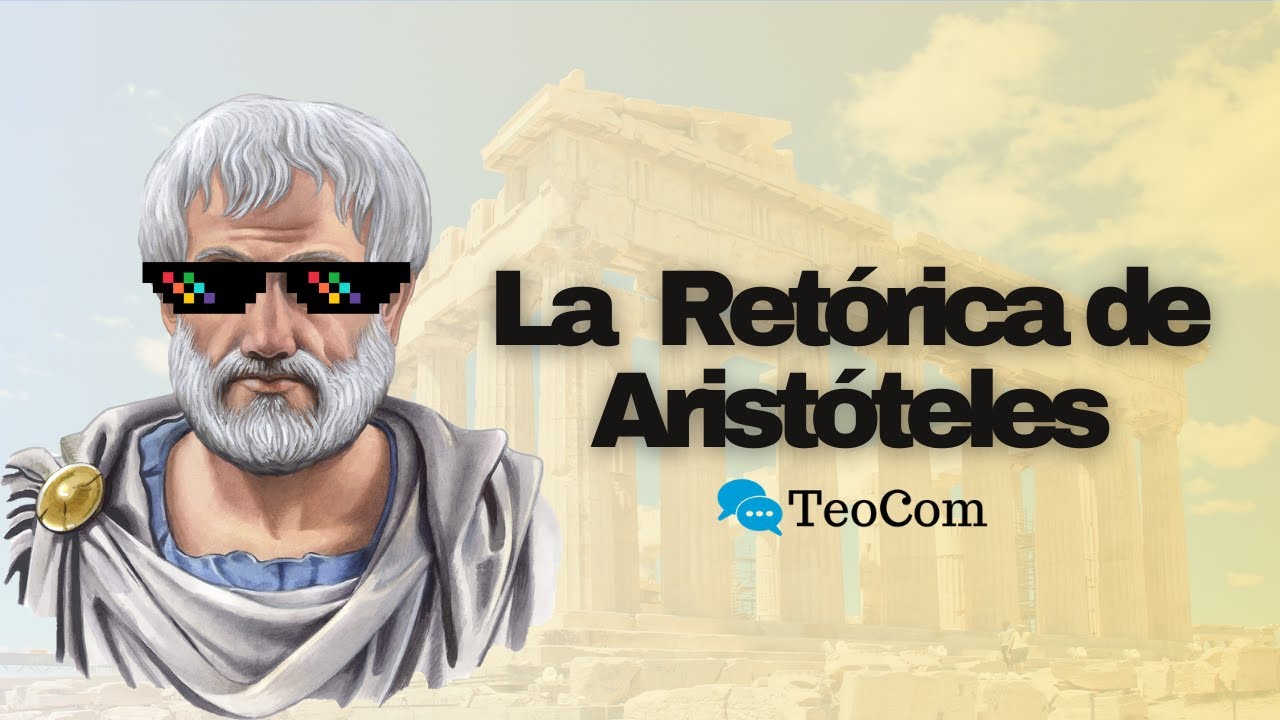The Three Persuasive Appeals: Logos, Ethos, and Pathos
Summary
TLDRHace más de 2,300 años, el filósofo Aristóteles identificó tres formas de persuasión: logos, ethos y pathos. Logos apela a la lógica y la razón, utilizando hechos y estadísticas. Ethos se centra en la credibilidad, estableciendo confianza a través de expertos o testimonios. Pathos apela a las emociones, buscando provocar respuestas emocionales como la tristeza o la felicidad. Un buen persuasor usa estos tres enfoques de manera equilibrada y tiene en cuenta al público al elegir qué estrategia utilizar. Al aplicar estos principios, puedes ser un comunicador más efectivo, al igual que Aristóteles.
Takeaways
- 😀 Aristóteles identificó tres tipos principales de persuasión: logos, ethos y pathos.
- 😀 Logos es el recurso de persuasión lógica que utiliza hechos, estadísticas y evidencia para apelar a la razón.
- 😀 Ethos es el recurso de persuasión basado en la credibilidad y confiabilidad del hablante o fuente.
- 😀 Pathos apela a las emociones del público, buscando provocar respuestas emocionales como tristeza o felicidad.
- 😀 Los tres recursos de persuasión son utilizados hoy en día por políticos, publicistas y oradores públicos.
- 😀 La clave para persuadir eficazmente es equilibrar los tres recursos: logos, ethos y pathos.
- 😀 El uso de logos permite a los oradores presentar argumentos basados en evidencia sólida y lógica.
- 😀 Ethos se centra en la construcción de la confianza del público, mostrando que la fuente de la información es confiable.
- 😀 Pathos tiene un impacto emocional y puede motivar al público a actuar según cómo se sienten.
- 😀 La conciencia del público es crucial: conocer a tu audiencia te ayuda a elegir qué recurso de persuasión usar.
- 😀 Un ejemplo de mala conciencia del público sería colocar un comercial de juguetes en un programa nocturno para adultos.
Q & A
¿Qué son los tres modos de persuasión mencionados en el video?
-Los tres modos de persuasión mencionados son logos, ethos y pathos.
¿Qué es logos y cómo se utiliza en la persuasión?
-Logos es el apelativo lógico que se utiliza para persuadir apelando a la razón a través de hechos, estadísticas, gráficos y otros datos objetivos.
¿Qué significa ethos en el contexto de la persuasión?
-Ethos se refiere al apelativo de credibilidad, donde el persuasor establece su confianza o autoridad, a menudo mostrando de dónde proviene la información o utilizando expertos o testimonios.
¿Cómo funciona el pathos en la persuasión?
-Pathos es el apelativo emocional, que se utiliza para persuadir apelando a las emociones del público, buscando crear una respuesta emocional, como tristeza o felicidad.
¿Por qué es importante la conciencia del público en el uso de logos, ethos y pathos?
-La conciencia del público es crucial porque los persuadores deben considerar las características del público al utilizar estos modos de persuasión para asegurarse de que el mensaje sea efectivo y adecuado para la audiencia.
¿Cómo un buen persuador maneja el equilibrio entre los tres modos de persuasión?
-Un buen persuador utiliza un equilibrio entre logos, ethos y pathos para mantener al público comprometido y, al mismo tiempo, conservar su confianza.
¿Qué ejemplo se utiliza en el video para explicar la conciencia del público?
-El ejemplo que se menciona es que no tendría sentido mostrar un comercial de juguetes durante un programa de entrevistas nocturnas, ya que el público objetivo no sería el adecuado.
¿Cuándo es más efectivo el uso de pathos?
-Pathos suele ser el modo de persuasión más efectivo, ya que apela directamente a las emociones, lo que puede generar una respuesta más profunda y memorable en la audiencia.
¿Cómo puede un persuasor ganar la confianza de su audiencia según el video?
-Un persuasor puede ganar la confianza de su audiencia mostrando de dónde proviene la información, utilizando testimonios expertos, o mostrando su propia credibilidad y autoridad en el tema.
¿Por qué es relevante la referencia a Aristóteles en el video?
-La referencia a Aristóteles es relevante porque él fue el filósofo que definió los tres modos de persuasión (logos, ethos y pathos) hace más de 2.300 años, y estos principios siguen siendo fundamentales en la persuasión moderna.
Outlines

Esta sección está disponible solo para usuarios con suscripción. Por favor, mejora tu plan para acceder a esta parte.
Mejorar ahoraMindmap

Esta sección está disponible solo para usuarios con suscripción. Por favor, mejora tu plan para acceder a esta parte.
Mejorar ahoraKeywords

Esta sección está disponible solo para usuarios con suscripción. Por favor, mejora tu plan para acceder a esta parte.
Mejorar ahoraHighlights

Esta sección está disponible solo para usuarios con suscripción. Por favor, mejora tu plan para acceder a esta parte.
Mejorar ahoraTranscripts

Esta sección está disponible solo para usuarios con suscripción. Por favor, mejora tu plan para acceder a esta parte.
Mejorar ahoraVer Más Videos Relacionados

Aristotle - Ethos, pathos and logos

Modelo de Comunicación de Aristóteles

RETÓRICA - Aristóteles (Resumen del Libro): Filosofía para PERSUADIR y CONVENCER con EXCELENCIA

Modelo de Comunicación de Aristóteles y Shannon y Weaver

La RETÓRICA DE ARISTÓTELES

Ethos, Pathos, and Logos | Rhetoric | The Nature of Writing

Ethos, Pathos & Logos
5.0 / 5 (0 votes)